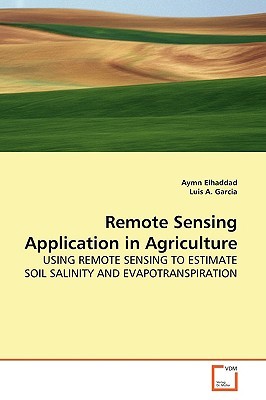
- We will send in 10–14 business days.
- Author: Aymn Elhaddad
- Publisher: VDM Verlag
- ISBN-10: 3639134362
- ISBN-13: 9783639134360
- Format: 15.2 x 22.9 x 0.8 cm, softcover
- Language: English
- SAVE -10% with code: EXTRA
Reviews
Description
Soil salinity is one of the fastest growing threats that affects agriculture and food production. Detecting and evaluating the impact of soil salinity with traditional methods has been a laborious and time consuming job, recently methods for detecting soil salinity have improved greatly thanks to new technology. This book describes methods to detect soil salinity levels in agricultural lands based on crop conditions and Evapotranspiration (ET) using satellite imagery. Quantifying ET accurately has always been considered one of the most challenging and expensive tasks, most of the methods currently used to achieve this task depend on point measurements that do not reflect the spatial variability of ET in agriculture fields. This book describes the development of a surface energy balance-based model (Remove Sensing of ET - ReSET) that handles the spatial variability in ET, the model estimates ET based on remotely sensed data using satellite imagery. ET is estimated for each pixel in the image therefore displaying the spatial variability of ET even within fields. Relationships between ET and soil salinity levels in agriculture fields were developed for several crops.
EXTRA 10 % discount with code: EXTRA
The promotion ends in 17d.00:24:46
The discount code is valid when purchasing from 10 €. Discounts do not stack.
- Author: Aymn Elhaddad
- Publisher: VDM Verlag
- ISBN-10: 3639134362
- ISBN-13: 9783639134360
- Format: 15.2 x 22.9 x 0.8 cm, softcover
- Language: English English
Soil salinity is one of the fastest growing threats that affects agriculture and food production. Detecting and evaluating the impact of soil salinity with traditional methods has been a laborious and time consuming job, recently methods for detecting soil salinity have improved greatly thanks to new technology. This book describes methods to detect soil salinity levels in agricultural lands based on crop conditions and Evapotranspiration (ET) using satellite imagery. Quantifying ET accurately has always been considered one of the most challenging and expensive tasks, most of the methods currently used to achieve this task depend on point measurements that do not reflect the spatial variability of ET in agriculture fields. This book describes the development of a surface energy balance-based model (Remove Sensing of ET - ReSET) that handles the spatial variability in ET, the model estimates ET based on remotely sensed data using satellite imagery. ET is estimated for each pixel in the image therefore displaying the spatial variability of ET even within fields. Relationships between ET and soil salinity levels in agriculture fields were developed for several crops.


Reviews